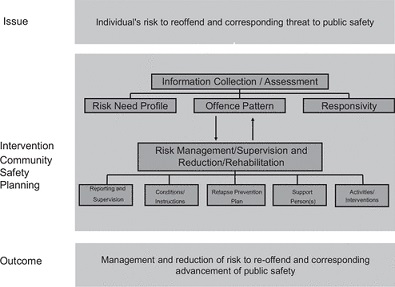A graph from “Case planning and recidivism of high risk and violent adult probationers,” a study involving the Ministry of Justice.
Training has begun for a justice program that targets violent offenders on Peter Ballantyne Cree Nation.
The idea is to identify those responsible for the most serious crimes at Deschambault Lake, Sandy Bay and Pelican Narrows and take a coordinated approach to reducing their risk to reoffend.
“In those communities there would be a really small group of individuals that commit a lot of the crime, and certainly a lot of the violent crime. And so part of it is is really trying to focus in and target on those specific individuals,” said Dean Carey, the director of offender programs with the Ministry of Justice.
It looks like by years-end, up to 20 offenders will be brought into the mandatory Northern Serious Violent Offender Response program – these would be people who are serving sentences in the community or are on probation in the region. Clients will include adults and youth who have committed aggravated assault or attempted murder, serious sexual or domestic violence, and murder.
The northeast was chosen to carry out the program because of concerns borne from its crime and violence statistics, which includes a number of murder and manslaughter charges being laid in the past year alone. The Ministry of Justice consulted with the communities themselves, finding Elders, leaders, and young people addressing a theme of concerns for “safety and people feeling safe within those communities,” Carey said.
So far, there have been a number of training exercises to familiarize the RCMP, probations, prosecutors, and others with how to notice and address patterns in the offenders that lead to recidivism. The improved monitoring and supervision is meant to track offenders, both when they’re doing well and when they’re not.
“When they are doing well we want to be having contact with them and really positively reinforcing those behaviors and what they’re doing so that they’ll continue. And we also want to be paying attention to when the wheels fall off … and what can we do to get them back on track before people get hurt?” Carey said.
The project, funded through the province and RCMP, uses a model that’s already been successful in North Battleford and Saskatoon. If done properly, it can reduce recidivism by 44 per cent over a two-year period for “very high risk serious violent young offenders,” according to a 2016 Saskatchewan study published in the Journal of Community Safety and Wellbeing.
Training with community partners will continue in September, and Carey said the program may be taking in offenders by late fall.
